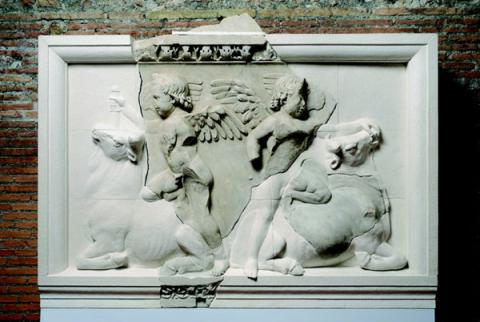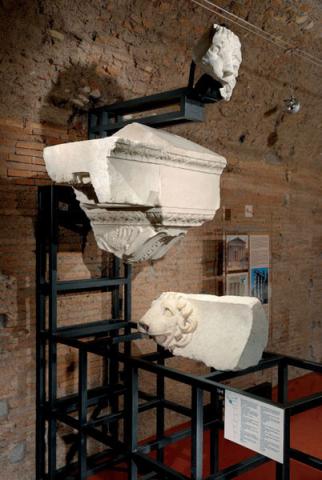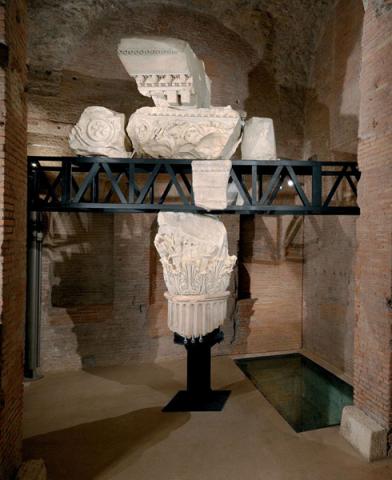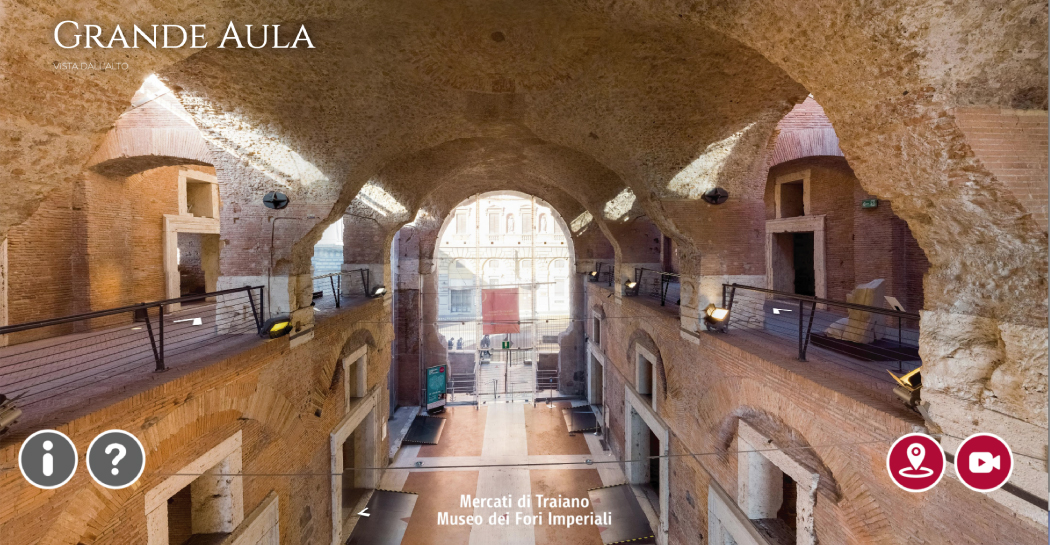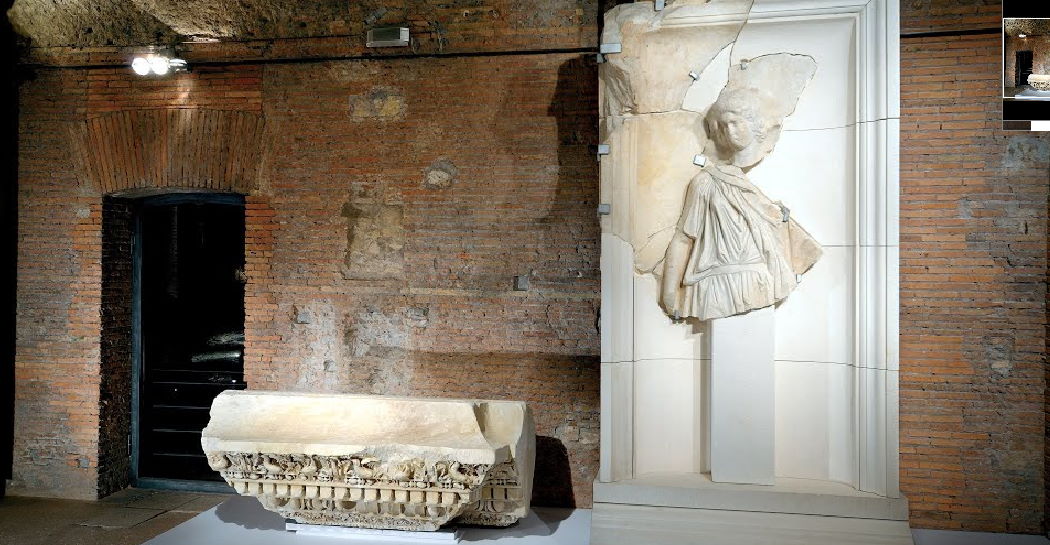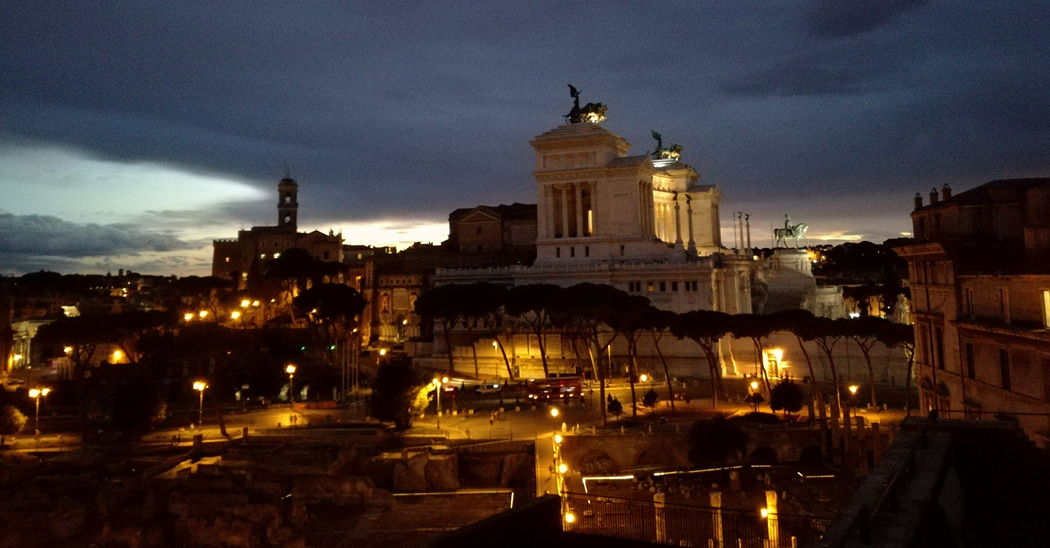Forum of Trajan
The Forum of Trajan, which was inaugurated in 112 AD, completed the big monumental district of the Imperial Forums. The Column of Trajan was completed the following year, together with the renovations to the Temple of Venus Genetrix in the Forum of Caesar.
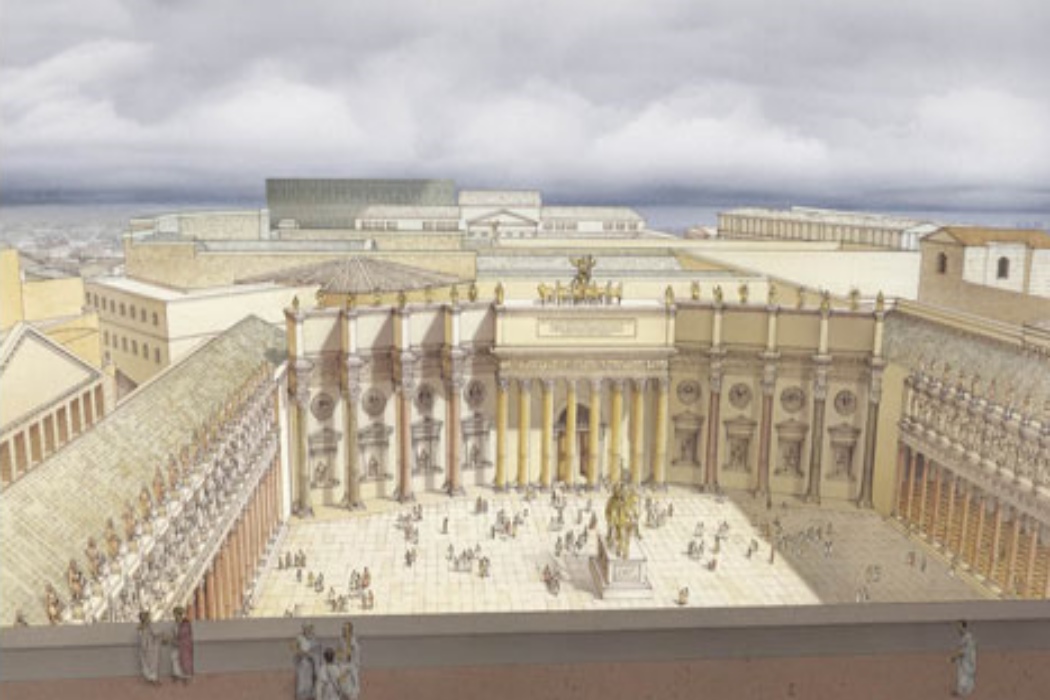
In order to create the huge complex (300 x 185 m) space was obtained by cutting into the slopes of the Capitoline and Quirinal Hills, which until then had been connected by a saddle. The excavation works had probably already started under Domitian at the same time as the layout of the Forum of Nerva. The works were interrupted after the death of the emperor, who was murdered in a conspiracy in 96 AD. Continued by Trajan, they were financed with the conquest of Dacia (now Romania). The conquest was conducted in two campaigns (101 -102 and 105 -106 AD) and ended with the defeat and subjugation of the Dacians and the death of their king Decebalus.
The architect of the work was Apollodorus from Damascus, who was the military engineer that had accompanied the emperor in the victorious war. The plan of the Forum of Trajan was more complex than that of those built by his predecessors. In fact, it included a vast square, flanked by porticos with exedras set back into them. On one side was the Basilica Ulpia that is thought to have housed a library, behind which was the Column of Trajan. On the opposite side, the square was closed by a large three sectioned hall (a rectilinear central sector and lateral sectors that faced inward). Its monumental columned façade formed the background for the colossal equestrian statue of the emperor, behind the central sector of which was a quadrangular courtyard that connected the new forum with the Forum of Augustus.
The monumental complex was used as the grandiose setting of public ceremonies and to house statue cycles that honoured famous people from different eras.


























